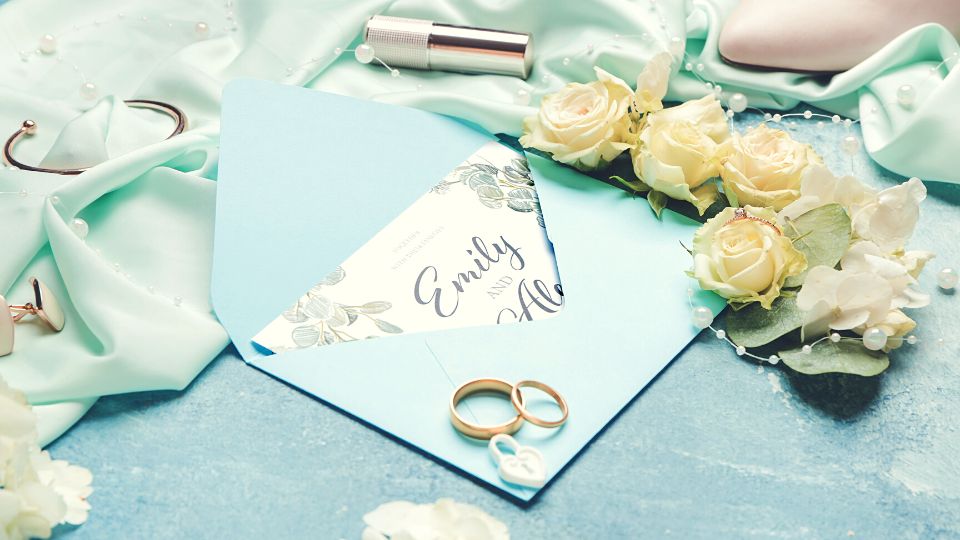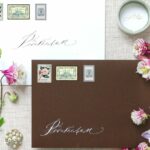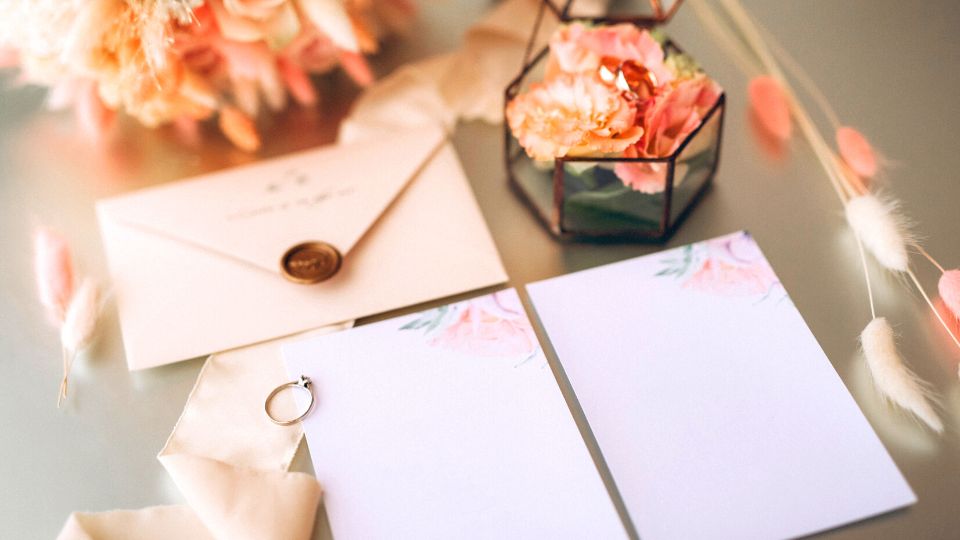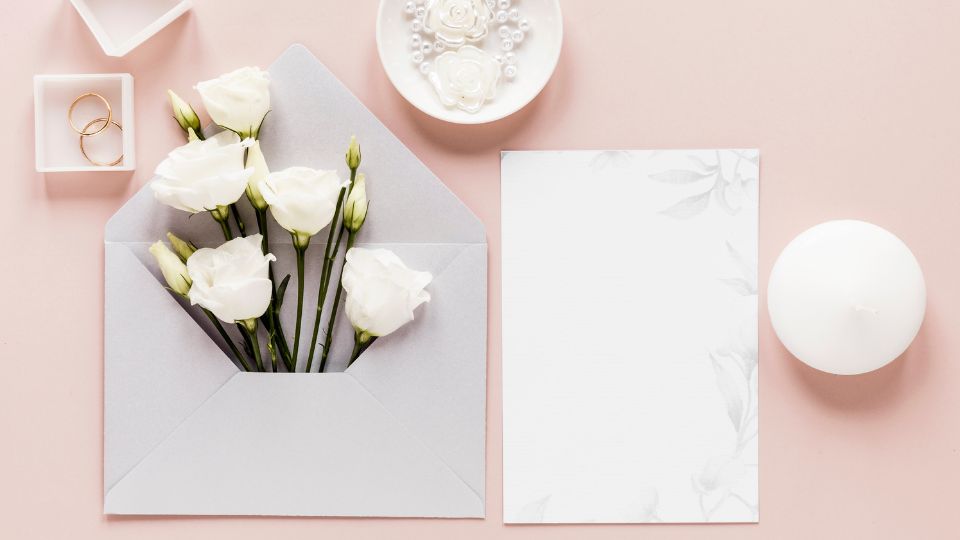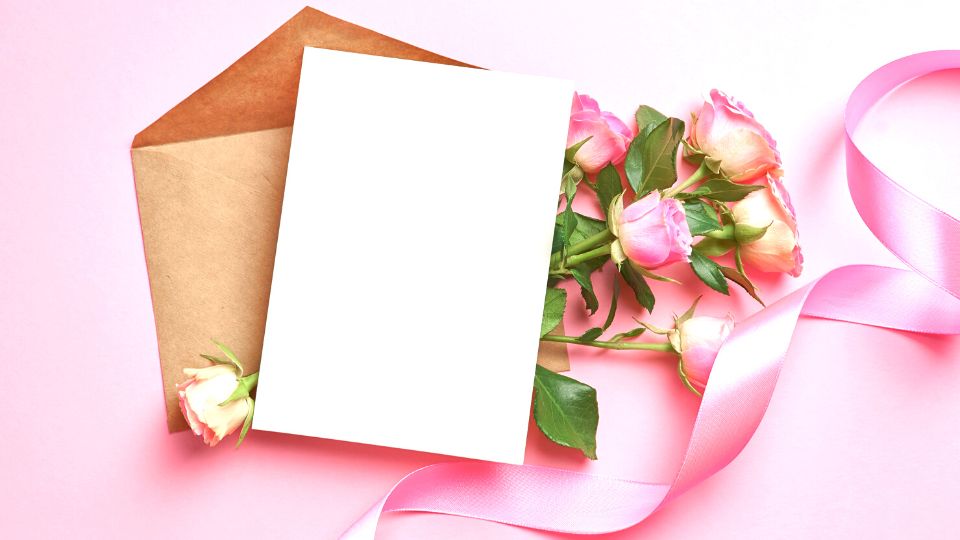Choosing the perfect paper finish for wedding invitations can be a daunting task. With so many options available, it’s important to choose a finish that complements the overall style and theme of the wedding.
From uncoated paper to silk laminate, each finish has its own unique characteristics and advantages. In this article, we will explore the different types of paper finishes available and provide tips for choosing the best finish for your wedding invitations.
What is the best finish for invitations?
When it comes to choosing the best finish for wedding invitations, there are several factors to consider, including the overall style and theme of the wedding, the printing technique being used, and personal preferences. Two popular options for wedding invitations are linen and cotton finishes, while matte finishes are also a common choice.
Is linen or cotton better for wedding invitations?
Ultimately, the best finish for wedding invitations will depend on the couple’s preferences and the overall style and theme of the wedding. Linen and cotton finishes are great choices for couples who want a more classic and elegant look, while matte finish is a great choice for those who prefer a more modern and clean look.
What is the difference between matte and linen finish?
In summary, matte finish paper has a smooth and soft appearance, while linen finish paper has a textured and elegant appearance. The choice between the two will depend on personal preferences and the overall style and theme of the wedding.
Uncoated Paper
Uncoated paper is a popular choice for wedding invitations and has several unique characteristics that set it apart from other paper finishes. Here are some characteristics, advantages, and disadvantages of using uncoated paper for wedding invitations, as well as some tips for using it effectively.
Characteristics of Uncoated Paper
- Uncoated paper has a natural, textured feel that gives it a soft and rustic appearance.
- It has a porous surface that absorbs ink and creates a matte, non-reflective finish.
- Uncoated paper is typically less expensive than other finishes, making it a great choice for couples on a budget.
Advantages of Using Uncoated Paper for Wedding Invitations
- Uncoated paper is eco-friendly and can be recycled or composted after use.
- It provides a natural, organic feel that can be perfect for outdoor or rustic weddings.
- It is easy to write on, which is great for RSVP cards or handwritten notes.
- It can be printed on with both digital and letterpress printing techniques.
Disadvantages of Using Uncoated Paper for Wedding Invitations
- The porous surface can cause ink to bleed or smudge, which may not be ideal for designs with fine details.
- The natural texture of uncoated paper can make it more difficult to create a clean and precise design.
- The paper can be more susceptible to damage, such as tearing or wrinkling.
Tips for Using Uncoated Paper for Wedding Invitations
- Choose a higher quality paper with a heavier weight to avoid bleeding and smudging.
- Use bold and simple designs that can be easily read on the textured surface.
- Consider using darker ink colors to create a contrast and help the text stand out.
- Consider adding a varnish or sealant to protect the paper and design from damage.
Silk Laminate
Silk laminate paper is a popular choice for wedding invitations and has a unique and luxurious appearance. Here are some characteristics, advantages, and disadvantages of using silk laminate paper for wedding invitations, as well as some tips for using it effectively.
Characteristics of Silk Laminate Paper
- Silk laminate paper has a smooth, silky finish that gives it a high-end look and feel.
- It is typically thicker and more durable than other paper finishes, which makes it a great choice for formal invitations.
- The lamination process creates a protective layer that resists water, stains, and tearing.
Advantages of Using Silk Laminate Paper for Wedding Invitations
- The smooth finish provides a modern and sophisticated look that can be perfect for contemporary weddings.
- The protective layer helps to prevent damage and ensures that invitations look pristine for a longer period of time.
- Silk laminate paper can be printed with various printing techniques, including digital, offset, and letterpress printing.
- It has a premium look and feel that is ideal for upscale weddings.
Disadvantages of Using Silk Laminate Paper for Wedding Invitations
- Silk laminate paper can be more expensive than other paper finishes, which may not be ideal for couples on a tight budget.
- It is not as eco-friendly as other paper finishes and is not recyclable or compostable.
- The smooth finish can be more difficult to write on, which may not be ideal for RSVP cards or handwritten notes.
Tips for Using Silk Laminate Paper for Wedding Invitations
- Choose a thicker and heavier weight paper to enhance the high-end feel of silk laminate paper.
- Use bold and modern designs that complement the smooth finish.
- Consider using metallic or foil printing to add a touch of luxury to the design.
- Consider using a professional printer that has experience printing on silk laminate paper.
Gloss UV
Gloss UV paper is a popular choice for wedding invitations and has a shiny and polished appearance. Here are some characteristics, advantages, and disadvantages of using gloss UV paper for wedding invitations, as well as some tips for using it effectively.
Characteristics of Gloss UV Paper
- Gloss UV paper has a shiny, reflective finish that creates a polished and high-gloss appearance.
- It is typically thicker and more durable than other paper finishes, which makes it a great choice for formal invitations.
- Gloss UV paper is resistant to fading and discoloration, which ensures that invitations look pristine for a longer period of time.
Advantages of Using Gloss UV Paper for Wedding Invitations
- The shiny and reflective finish provides a modern and sophisticated look that can be perfect for contemporary weddings.
- Gloss UV paper is resistant to water, smudging, and fading, which ensures that invitations look pristine for a longer period of time.
- It can be printed with various printing techniques, including digital, offset, and letterpress printing.
- The high-gloss finish can make colors and designs appear more vibrant and eye-catching.
Disadvantages of Using Gloss UV Paper for Wedding Invitations
- Gloss UV paper can be more expensive than other paper finishes, which may not be ideal for couples on a tight budget.
- The shiny and reflective finish can be distracting and make it difficult to read the text on the invitation.
- It is not eco-friendly and is not recyclable or compostable.
Tips for Using Gloss UV Paper for Wedding Invitations
- Choose a higher quality paper with a heavier weight to enhance the high-gloss appearance of gloss UV paper.
- Use bold and modern designs that complement the shiny and reflective finish.
- Consider using metallic or foil printing to add a touch of luxury to the design.
- Use darker ink colors to create a contrast and help the text stand out.
Matte
Matte paper is a popular choice for wedding invitations and has a subtle and elegant appearance. Here are some characteristics, advantages, and disadvantages of using matte paper for wedding invitations, as well as some tips for using it effectively.
Characteristics of Matte Paper
- Matte paper has a non-reflective and non-glossy finish that creates a soft and subtle appearance.
- It is typically thinner and lighter than other paper finishes, which makes it a great choice for informal or casual invitations.
- Matte paper has a smooth surface that is easy to write on and can be printed with various printing techniques.
Advantages of Using Matte Paper for Wedding Invitations
- The subtle and elegant appearance of matte paper can be perfect for classic or vintage weddings.
- Matte paper is eco-friendly and can be recycled or composted after use.
- It is easy to write on, which is great for RSVP cards or handwritten notes.
- Matte paper can be printed with both digital and letterpress printing techniques.
Disadvantages of Using Matte Paper for Wedding Invitations
- The non-reflective surface can make colors and designs appear less vibrant than other paper finishes.
- Matte paper is more susceptible to damage, such as tearing or wrinkling, than other paper finishes.
- The lighter weight of matte paper can make it feel less formal or upscale.
Tips for Using Matte Paper for Wedding Invitations
- Choose a higher quality paper with a heavier weight to enhance the elegance of matte paper.
- Use simple and understated designs that complement the soft and subtle appearance.
- Consider using darker ink colors to create a contrast and help the text stand out.
- Consider adding a varnish or sealant to protect the paper and design from damage.
Linen
Linen paper is a popular choice for wedding invitations and has a unique and textured appearance. Here are some characteristics, advantages, and disadvantages of using linen paper for wedding invitations, as well as some tips for using it effectively.
Characteristics of Linen Paper
- Linen paper has a unique texture that creates a woven and fabric-like appearance.
- It is typically thicker and more durable than other paper finishes, which makes it a great choice for formal invitations.
- The texture of linen paper gives it a premium and high-end feel.
Advantages of Using Linen Paper for Wedding Invitations
- The unique texture of linen paper can add a touch of elegance and sophistication to wedding invitations.
- Linen paper is eco-friendly and can be recycled or composted after use.
- It can be printed with various printing techniques, including digital and letterpress printing.
- The thickness and durability of linen paper make it resistant to damage and wear.
Disadvantages of Using Linen Paper for Wedding Invitations
- The texture of linen paper can make it difficult to print fine details or intricate designs.
- The unique texture of linen paper may not be ideal for every wedding theme or style.
- It can be more expensive than other paper finishes, which may not be ideal for couples on a tight budget.
Tips for Using Linen Paper for Wedding Invitations
- Choose a higher quality paper with a heavier weight to enhance the premium feel of linen paper.
- Use simple and understated designs that complement the textured appearance.
- Consider using metallic or foil printing to add a touch of luxury to the design.
- Use darker ink colors to create a contrast and help the text stand out.
Choosing the Best Paper Finish
Choosing the best paper finish for wedding invitations can be a challenging task as there are several factors to consider. Here are some factors to keep in mind when choosing a paper finish and tips for balancing personal preferences with practical considerations.
Wedding Style and Theme
The overall style and theme of the wedding should guide the choice of paper finish. For example, a formal and upscale wedding may call for a gloss UV or silk laminate finish, while a casual and rustic wedding may be better suited for an uncoated or linen finish.
Printing Techniques
Some paper finishes are better suited for certain printing techniques, so it’s important to consider this when choosing a paper finish. For example, a gloss UV finish is ideal for digital and offset printing, while a letterpress printing technique is better suited for uncoated or cotton paper.
Paper Weight and Texture
The weight and texture of the paper can also impact the choice of paper finish. A thicker and heavier paper may be better suited for gloss UV or silk laminate finish, while a lighter weight paper may be ideal for a matte or uncoated finish.
Personal Preferences
Ultimately, the choice of paper finish should reflect the personal preferences of the couple and their families. It’s important to choose a finish that aligns with their vision for the wedding invitations and reflects their style and personality.
Tips for Balancing Personal Preferences with Practical Considerations
- Consider the Budget: The cost of the paper finish should be factored into the overall wedding budget. It’s important to choose a paper finish that fits within the budget while still achieving the desired look and feel.
- Test the Paper: Before making a final decision, it’s important to test the paper finish to ensure it meets the desired look and feel. This can involve ordering a sample or testing a small batch of invitations before ordering in bulk.
- Get Expert Advice: A professional printing company or wedding invitation specialist can provide expert advice on the best paper finish for a particular wedding style and theme.
Conclusion
Choosing the right paper finish for wedding invitations is a complex task that requires careful consideration. Personal preferences should play an important role in the decision-making process, but practical considerations such as budget and printing techniques must also be taken into account.
Ultimately, it’s important to select a paper finish that aligns with the couple’s vision for their special day and reflects their style and personality.
